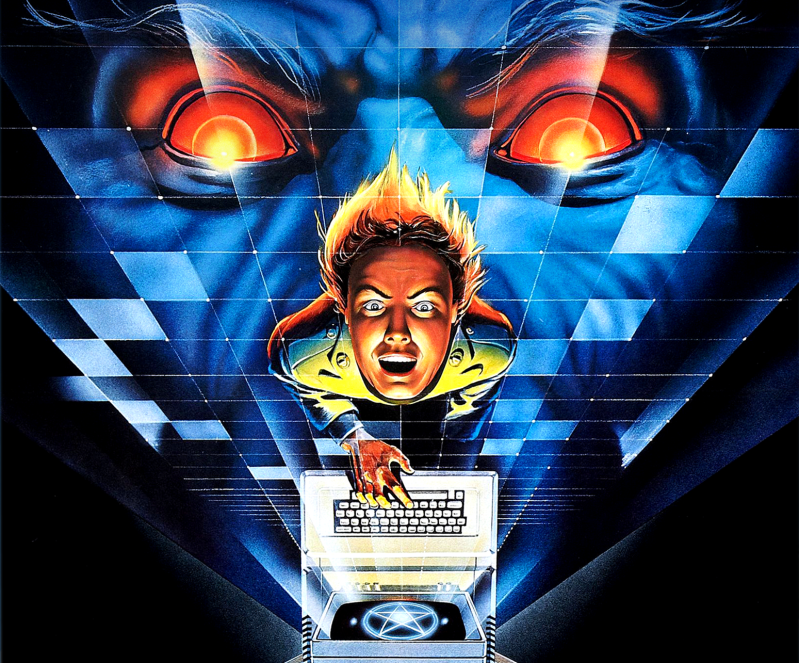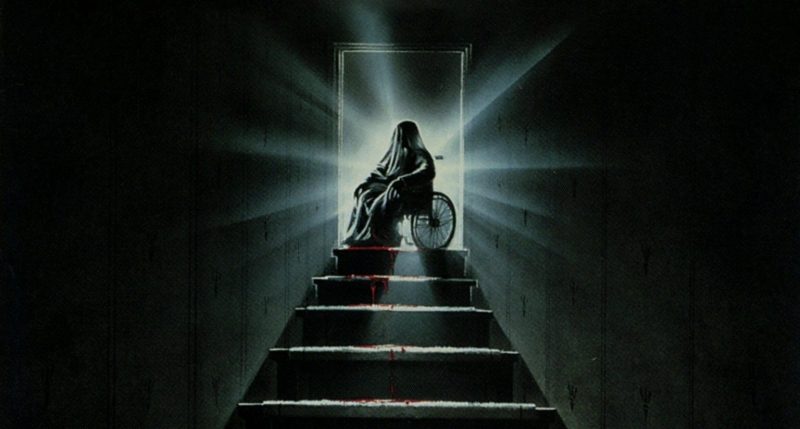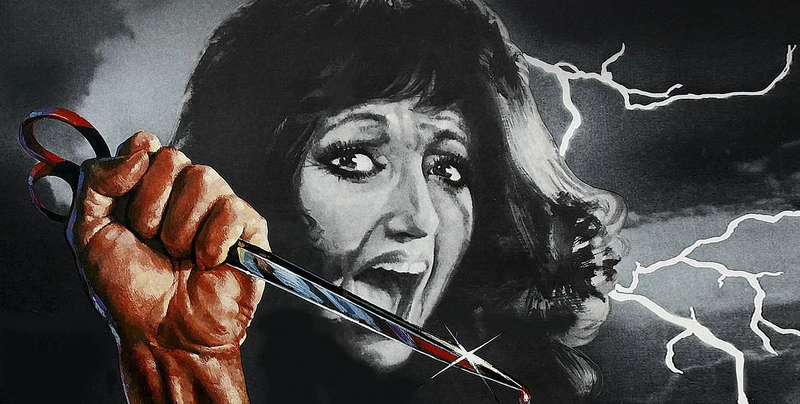
Director: James Isaac
18 | 1hr 35min | Horror, Slasher
The House franchise may fall short of greatness, way short, but no one can deny it as one of the most absurdly eclectic that horror has to offer. It all began rather inconspicuously, Friday the 13th alumni Steve Miner’s Fred Dekker penned cult favourite House the rather generic tale of a Vietnam vet turned horror novelist who returns to his boyhood home, only to be confronted by a peculiar dimension of ghouls and ghosts, including a giant, ‘Zombie Jason’-style soldier who forces protagonist Roger Cobb into a harrowing journey into his past. Okay, perhaps it wasn’t so generic, but when you compare it with the rest of the series, each instalment having little-to-no connection with the other three, the franchise seems to get crazier with each left-field release, at least in terms of defying expectation.
1987s House II: The Second Story, the tale of two yuppies who decide to dig up the corpse of an ancestor in search of a magical crystal skull, managed less than half the box office of the original, with returns of $10,000,000, which isn’t surprising since the movie, cutting corners wherever possible, used recycled music from Friday the 13th Part VI: Jason Lives. Interestingly, and as you will discover, quite tellingly, the movie would also star Friday the 13th Part VII: The New Blood‘s Lar Park Lincoln. By the time of House IV: The Repossession‘s release in 1992, the series had entered direct-to-video territory, the movie dabbling in native American supernatural shenanigans and a dwarf-led mafia conspiracy involving the dumping of illegal waste, though you have to doff your cap to the title’s cute double meaning, which is easily the most cerebral aspect of the whole ordeal. Interestingly, perhaps predictably, Friday the 13th‘s Harry Manfredini would score all four movies.
The wanton silliness of the series and its failed attempts at forging a money-spinning franchise should come as no surprise. Nor should the fact that the House movies have so many ties with the Friday the 13th series. That’s because they were the brainchild of Friday the 13th creator Sean S. Cunningham, who in 1980 took a chance on an ingenious commercial title that gave birth to a decade’s-long slasher phenomenon and one of horror’s most iconic figures. Taking its cue from John Carpenter’s Halloween, the original Friday the 13th raked in a whopping $59,8000,000 on a budget of around $550,000, the franchise managing hundreds of millions more thereafter. The House series was an attempt, at least to some degree, to replicate that success, but the concept, probably due to a shameless attempt to forge a series whose only real continuity lay in that marquee title, just didn’t have the same appeal.

The original House is probably seen as the best instalment of the series by the majority of moviegoers, but for me, House III: The Horror Show, referred to by many as simply The Horror Show, is easily the most interesting, and it all hinges on yet another slasher phenomenon. The Horror Show falls into that priceless bad movie sub-category the Freddy Krueger rip-off. By 1989, the same year that Cunningham and Paramount Pictures subjected us to the bloodless and thematically misleading Friday the 13th Part VIII: Jason Takes Manhattan, Jason Voorhees had grown passe. The fact that the eighth instalment of the series, which was initially set to feature promising scenes involving Madison Square Garden and the Empire State Building, spent much of its running time confined to a boat or the less expensive location of Vancouver, Canada, didn’t help, but in truth even the most die hard fans had grown weary of Paramount’s yearly cash-in. Instead, the world was obsessed with child murderer Krueger, whose own overexposure would soon lead to a similar sense of apathy among audiences, but Wes Craven’s supernatural twist on the slasher picture provided plenty of ammunition for cheap knock-offs, the series inspiring cult imitators as far abroad as India and Thailand.
Of all those rip-offs, The Horror Show may be the most shameless to not feature a razor-fingered glove. The movie, which was co-written by the infamous ‘Alan Smithee’, an official blanket pseudonym used by writers or directors who wish to disown a project after the fact, features a supernatural serial killer who is brought back to life and sets off on a quest for vengeance. Not only that, but, much like Krueger, Brion James’ deliciously insane Max Jenke, fried to a frazzle after being sentenced to death via electric chair, is hideously scarred in a phenomenally over the top scene that sees him endure enough voltage to take down ten killer whales. This results in a tumorous eyesore that makes you pine for the good old days of practical effects, though, presumably due to budgetary restrictions, his face returns to normal thereafter, a bummer for everyone but James, who presumably escaped hours of boredom in the makeup department.
Not content with sharing the same exact concept as A Nightmare on Elm Street in a broader sense, Jenke’s supernatural power emanates from a boiler room in a family cellar, which, luckily for him, seems to be the most popular room in the entire house, and before you jump to any logical conclusions, we’re not dealing with an electric boiler here. Instead of a razor-fingered glove, Jenke’s weapon of choice is the much more practical, less symbolic meat cleaver, earning him the well-deserved moniker Meat Cleaver Max. He also uses uses the word Bitch a lot, which as most of you will know became Krueger’s catchphrase after the brilliant Robert Englund ad-libbed the line ‘Welcome to primetime, bitch!’ in a famous scene from 1987’s A Nightmare on Elm Street Part 3: The Dream Warriors. Unlike the majority of Elm Street rip-offs, there’s some equally tasty, if wholly derivative dialogue dished-up here, James doing more than most to live-up to the one and only Englund.

Jenke’s reason for returning from the dead, Detective Lucas McCarthy, is played by the ever dependable Lance Henriksen, who like Blade Runner‘s James and the legendary Lawrence Tierney, here appearing in what is little more than a cameo, was clearly in need of a quick payday at the turn of the 90s following an incredible 80s run that saw him star in genre classics such as The Terminator and Aliens. McCarthy is a no-nonsense 80s cop who refuses to buy into the film’s supernatural shenanigans until the bitter end, questioning his own sanity while snubbing the interest of the department’s shrink, until he winds up being framed for a series of murders by a presumed dead menace who basks in Krueger style manipulation while cops sweat and overact in an attempt to land one of their own in jail. The sheer anger and personal nature of the interrogating cop had me grinning from ear to ear.
There to lend his expertise is Thomas Bray’s Peter Campbell, a mad scientist, minus the wild hair, who drips with the introverted peculiarity of an early Peter Jackson character. Campbell comes out of nowhere and is presumably a very wealthy man given the fact that no institution in the world would ever dream of entertaining his outlandish field of research, let alone fund it. Campbell’s wild theories make for some delightfully stupid plot developments, like the postulation that Jenke had been building up his tolerance to high levels of voltage in preparation for his inevitable date with Old Smokey, courtesy of a home-installed electric chair no less (good luck paying the bills), or the even whackier solution that will see Jenke brought back into reality long enough for him to eat some lead and be put out of commission for good.
Unlike A Nightmare on Elm Street, The Horror Show doesn’t deal in dreams per se. There are dreams, the kind that blur the lines between reality and the subconscious, but some of them occur before Jenke’s execution, our killer later inhabiting a different kind of supernatural realm, one that is only marginally explained by Campbell’s mercifully succinct bursts of cod science. There is, however, a baffling pre-realm dream sequence just prior to McCarthy’s hilarious transcendence through the family boiler. By that point, Jenke has already entered reality multiple times to commit acts of rape and murder (if indeed the rape is real), which kind of negates the whole ‘bring the villain back into reality’ concept, and once McCarthy has crossed over to the other side, we are very much in Freddy Krueger dreamworld territory, complete with ethereal score cues and the kind of omnipotent cackle that may strike you as just a little familiar.

There are also a series of what appear to be daydreams that act as a platform for the film’s Freddy-esque practical effects sequences, most of them lifted directly from the series at large, like the moment when Jenke turns into the family’s dinner table turkey, or the scene with the phantom pregnancy of McCarthy’s daughter. That particular set-piece is almost identical to one featured in A Nightmare on Elm Street Part 2: Freddy’s Revenge, the moment in which an impression of Krueger appears in Jesse’s stomach. It stops short of our killer shedding his victim’s skin like a silk gown, but for such a low-budget affair it’s pretty damn impressive. It’s also rather confusing in terms of plot, a far cry from Wes Craven’s mesmeric handling of those dreamworld delineations, but therein lies the film’s off the wall appeal.
James is a hoot as Jenke, proving to be The Horror Show‘s MVP. The actor has a real knack for over the top, cartoon villainy, and he embraces the role with a sadistic relish, particularly when taunting McCarthy with lewd innuendo regarding his wife and daughter, who understandably begin to distrust the family patriarch when they hear him threatening an invisible Jenke in the basement and, more worryingly, unloading full clips into the television set during family time out of sheer frustration. You also get to see James brandishing a butcher’s knife in a lady’s wig, which should give you some indication of how far he pushes the envelope. If The Horror Show wasn’t tied to the House franchise, I could totally see him headlining a tongue-in-cheek slasher franchise of his own. He’s that damn good.
Another notable face to appear in The Horror Show is Dedee Pfeiffer, who made her theatrical horror debut as the cute and lovable Amaretto in Richard Wenk’s 1986 cult vampire flick Vamp. Dedee is of course the younger sister of the much more universally recognized Michelle Pfeiffer, an ever-present in Hollywood during the 80s and 90s. It must have been hard living in the shadow of one of cinema’s most respected female leads, an actress who starred in such classics as Brian De Palma’s cult crime saga Scarface and blockbuster Tim Burton sequel Batman Returns. It never quite happened for Dedee on such a massive scale, but she has bundles of personality and is just so likable as an onscreen presence. It’s a shame we didn’t get to see more of her.

Of the four House instalments, House III: The Horror Show is the most unique, a conceptual outlier that holds such little resemblance to the previous two installments that, despite being conceived as a film that could, however tenuously, be marketed as a direct sequel, was ultimately marketed as unrelated in the US, distributor United Artists ditching the House part of the title altogether, though it was retained for consumers outside of the US. Rightly written off as a generic Fred Krueger clone that followed the typical three-beat pattern of scare, false alarm, scare (the film even resorts to the ‘cat jumps out of an unseen corner’ trope), the film’s unashamed derivative aspirations, ludicrous, often eye-catching practical effects and cavalier presentation have earned it a much deserved cult following over the years. It falls firmly and comfortably into the bad movie category, with a cast and budget that elevates it above most B-movie drivel.
Interestingly, the movie is strikingly similar to Wes Craven’s Shocker, itself something of a lazy Elm Street retread, that was actually released six months after House III: The Horror Show, which means that we basically have a situation in which one horror franchise imitates another horror franchise, only for the imitated to become the imitator. At least that’s how it could have been perceived. In reality, Craven was approached by Universal Pictures to replicate the success of the A Nightmare on Elm Street series for their studio, leading the filmmaker to imitate his own creation in a way that was just a little too transparent. This is somewhat ironic as three years earlier, Craven was wrongly criticized for the exact same crime after Warner Brothers tampered with Craven’s sci-fi drama Deadly Friend, forcing the filmmaker to tack-on a series of Krueger-esque dream sequences that, much to his distaste, completely altered the tone of the movie. What a nightmare!
Mendozaaaaaaaaa!
As well as being pricelessly self-aware, some of the acting in House III: The Horror Show can be laughably bad, like a moment early in the movie following a generic and comically gruesome police chase.
Through a series of nightmares of the non-supernatural variety, we discover the reason for no-nonsense cop McCarthy’s hatred of despicable serial killer Max Jenke. Not only was Jenke, described during a ludicrous news segment as America’s worst serial killer, responsible for the murder of children on McCarthy’s watch, he also laid waste to token black partner Casey.
In a scene reminiscent of the McBain segment in which McBain’s partner Scoey is gunned down in a restaurant, Casey, mutilated thanks to Jenke’s wanton path of destruction that even sees a hand pop-up in a flash frier, gives a deliriously melodramatic apology for trying his best before perishing in his buddy’s arms.
The Wrong Place at the Wrong Times
The McCarthy family seem to spend an awful amount of time in the basement, the exact place where Jenke’s power lies, much more than your average suburban family. I mean, they even have a clothes rack down there. Not exactly the most convenient place to dress in the morning.
Early in the film, we spot a man’s boots peeking out from under a rack of dresses as Mrs. McCarthy does her daily chores, and naturally assume that it is Jenke waiting to pounce.
Later, that assumption is almost confirmed when someone leaps out for a very obvious jump-scare, only the mystery figure is actually daughter Bonnie’s hunk of a boyfriend, Vinnie, who has been standing completely still in the same spot for god knows how long.
How he gained access to the basement is anyone’s guess.
Ki Ki Ki, Ma Ma Ma
Another commonality that House III, and in fact the entire House series, has with the Friday the 13th franchise is the appearance of Kane Hodder, who currently holds the record for the most appearances as Jason Voorhees.
Hodder was the stuntman in all four House movies, which is why the zombie soldier from the original House holds such a stark resmemblance to Zombie Jason, a variation of the character that Hodder perfected.
You Can’t Drink It Slow If It’s Quik
Product placement is everywhere in movies of all varieties, but very few dedicate an entire scene to it.
Not only does a scene involving McCarthy’s wife and son litter the room with boxes of Nesquik, an entire page of dialogue is dedicated to it, super rad, late 80s scamp Scott McCarthy writing to the company with the lie that he “found a rat hair in the last carton of their otherwise delicious product” in the hope of recieving a year’s supply.
A rat hair?
I have a feeling that may have backfired.
Choice Dialogue
Furious at the crimes of the now captured Jenke, McCarthy, the man responsible for sending him to the Hot Seat, just can’t help himself, actively becoming an audience member for the big event. Sadist!
After witnessing a monstrously burnt Jenke shrug off your standard blast of death-inducing electricity, he is treated to the film’s most priceless line:
Jenke: [on being electrocuted] All that did was give me a hard on!
A transparent imitation of Wes Craven’s conceptual eureka,
Edison Smithis even sillier than you might expect, but if you’re a sucker for Elm Street clones, old school practical effects and deliriously second-rate screenplays, this one should not be missed. It may even give you a hard-on.





































House III: The Horror Show mercilessly. plunders the Freddy franchise and other horror films, but I think that inventiveness and new spins on familiar tropes is what makes it stand out from the other House films. The format was so flexible it could’ve really gone anywhere from this.
LikeLike
I know, right? What an odd series of films. This is easily my favourite for all the reasons you mentioned. Under a different title, House III could have been the start of a priceless slasher franchise in its own right.
LikeLiked by 1 person